A Perfect Day in the Dominican Republic
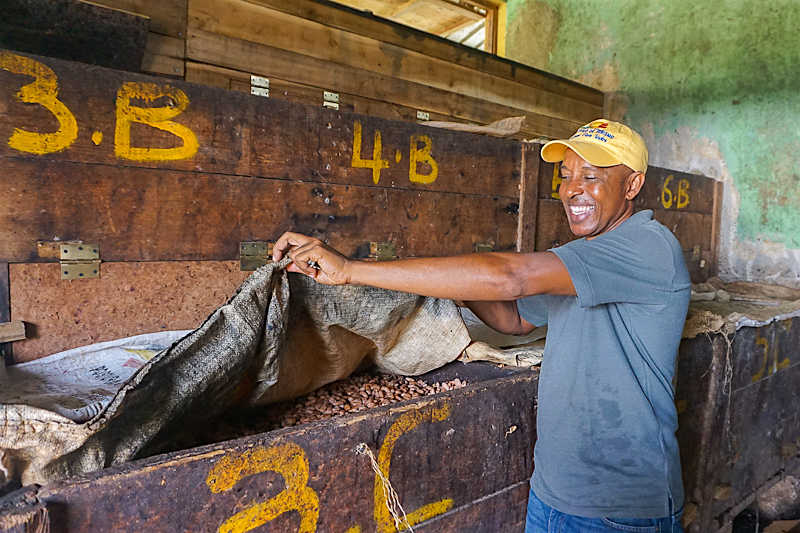
If anything could get me out of the most ridiculously heavenly bed I had ever slept in, you would be right in guessing chocolate… Not just any chocolate, but some of the most amazingly rich and pure chocolate I have ever tasted – after all, there was a reason why Christopher Columbus smuggled some back to Europe after robbing the cargo of a Mayan trader.
I was staying at the elegant Hostal Nicolas De Ovando located in the colorful Historic Colonial Zone in Santo Domingo, on the famous cobbled street, “Las Damas” – where once the ladies of the court, led by Christopher Columbus’ daughter-in-law, would promenade daily to gossip and possibly catch the eye of a man.
Built in 1502 and named after the city’s founder, the hotel is now a UNESCO World heritage site. Filled with old world ambience and charm, push open the door and it’s as if you have taken a step back in time. I only had to think about what I might be wanting and, Voila! room service was gently knocking at my door. Actually, they often thought of it before me.
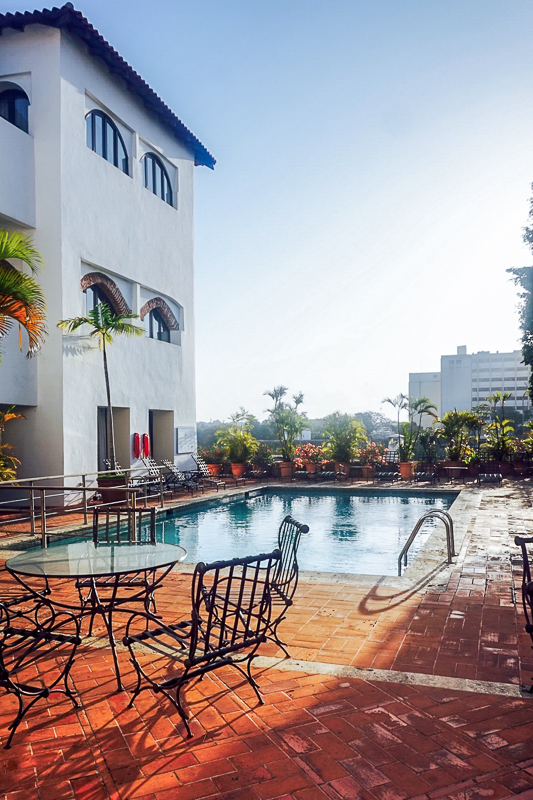
Pool area at Hostal Nicolas De Ovando
The early morning alarm was quickly forgotten after a scrumptious breakfast on the bougainvillea filled terrace and a quick swim. I liberally slathered myself head to toe in sunscreen and set off to meet our bubbly and extremely knowledgeable guide Paula from Tequia Experiences.
We were headed to the Yamasa municipality just northwest of Santo Domingo. As we meandered through the countryside filled with lush sugar plains and small lively villages with colorful markets, food stalls called my name – I would have to save that exploration for another time. We were on a chocolate mission after all. Who knew that the Dominican Republic is the number one exporter of organic cocoa in the world???
Paula passionately expounded on the ability of chocolate to cure all our woes from heartache to heart attacks, (the high level of flavonoids are said to be beneficial to cardiovascular health) even wrinkles – apparently I should have slathered myself in cocoa instead of SPF 70? She even went as far as suggesting that cocoa was better at improving our love life than those little blue pills – watch out Pfizer!
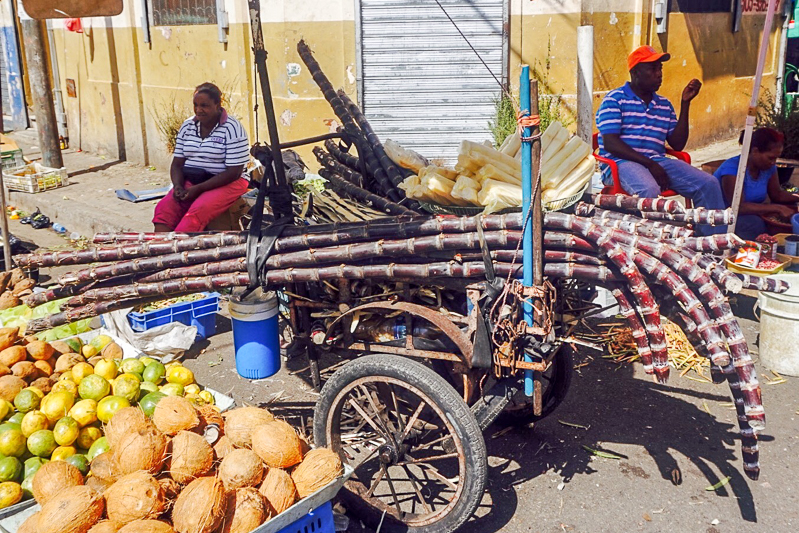
One of the local markets
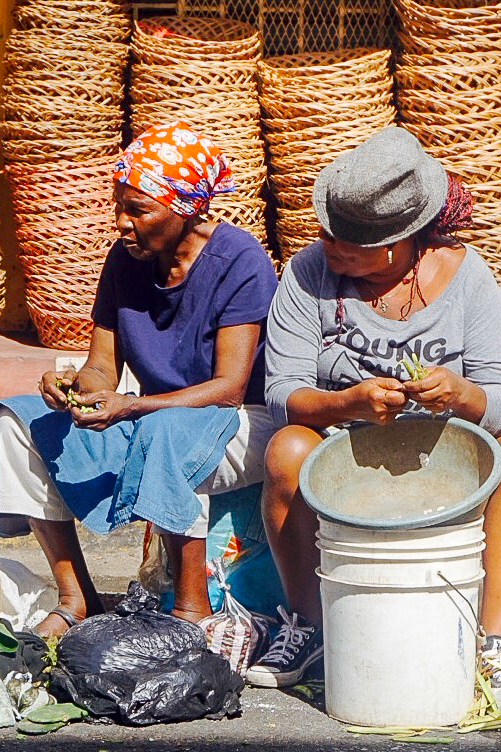
Shelling beans
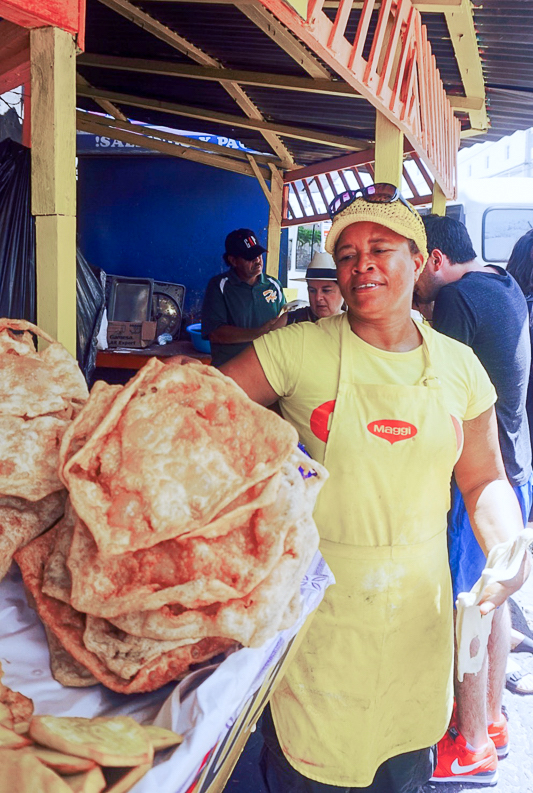
Yaniqueques (Crispy fried Johnny Cakes)
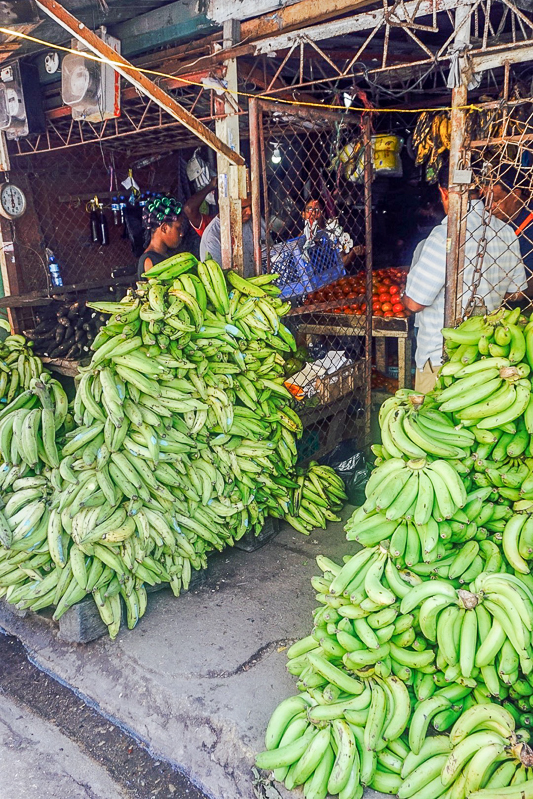
Plantains and bananas
Our first stop was Conacado, the National Confederation of Dominican Cacao Producers – a cocoa coop where independent local farmers grow cocoa according to the highest standards of Fair Trade and Organic Certification. They definitely mean organic – Bat droppings are often used as fertilizer!
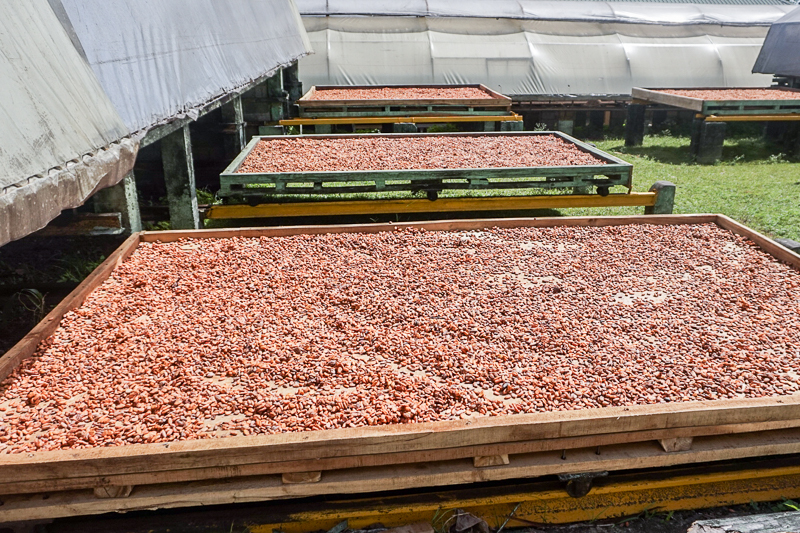
Cacao beans lolling in the sun
We toured the facility where the wet beans are initially transported so they can be fermented and dried under watchful eyes as humidity can be a problem throughout the Caribbean. With the scent of fermenting chocolate in the air (smells a bit like wine fermenting), we wandered through vast raised beds in various stages of drying, some under greenhouse style tarps and some laying directly in the sun.
The Pride of ownership and love of their craft was evident throughout the facility. After the beans are dried and sold all over the world, a portion of the profits are pumped back into the community through various programs – education, infrastructure, health and development by way of grants to small farmers and women’s organizations. A win-win situation.
Our next stop was the Guillen Brother’s Farm, to see where the beans originate. As we set off in search of the Cacao tree (Theobroma cacao) we were presented with colorful necklaces carved from the bean.
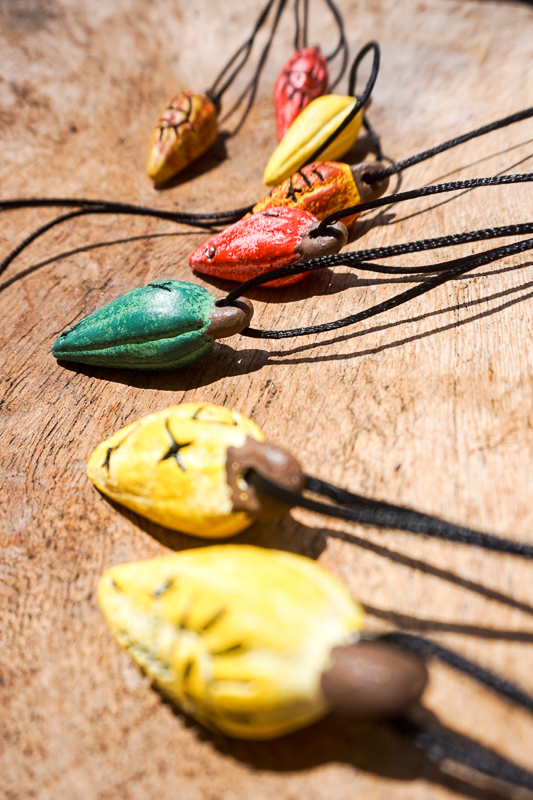
Necklaces made from the cacao beans
I certainly didn’t expect the gigantic colorful pods which hung from the trees. When I say gigantic I mean huge, almost football sized. They sprout willy-nilly right from the trunk, not the branches. Immature cocoa pods have a variety of colors, but most often are green, red, or purple, and as they ripen they change to yellow or orange.
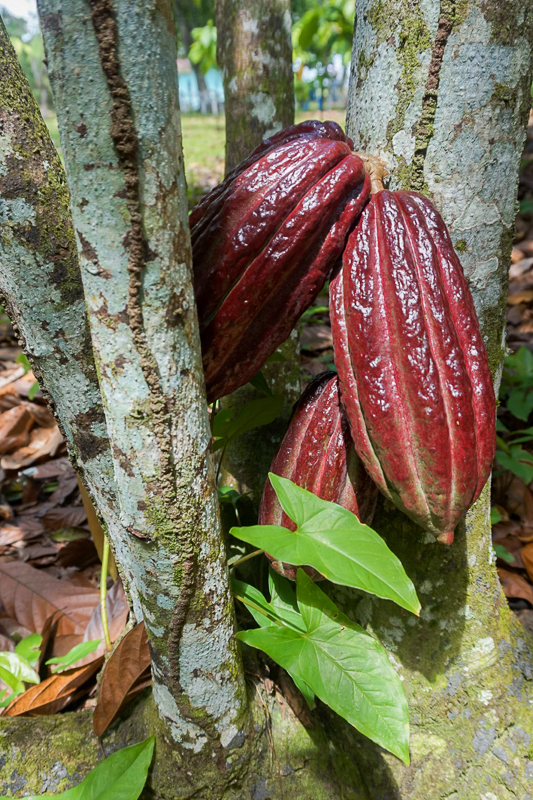
Immature pods
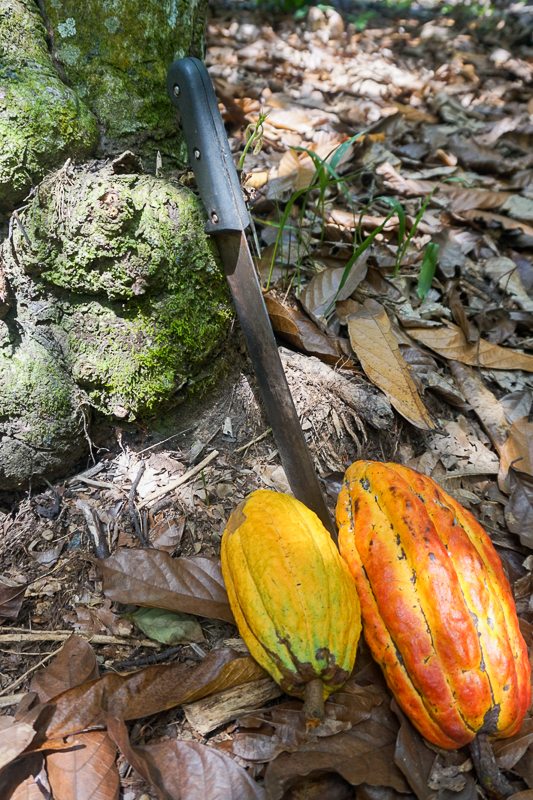
The colors change as they mature
The pods do not ripen at the same time and must be harvested throughout the week with a curved knife set atop a pole. They have a rough leathery rind about an inch or so thick and are filled with a sweet pulp that encloses the seeds (called baba de cacao) and contain about 30-50 beans each. One of the guides lopped off the top with a machete and invited us to sample the sweet pulp. It was surprisingly tasty and citrusy, sort of like a cross between a mango and passion fruit.
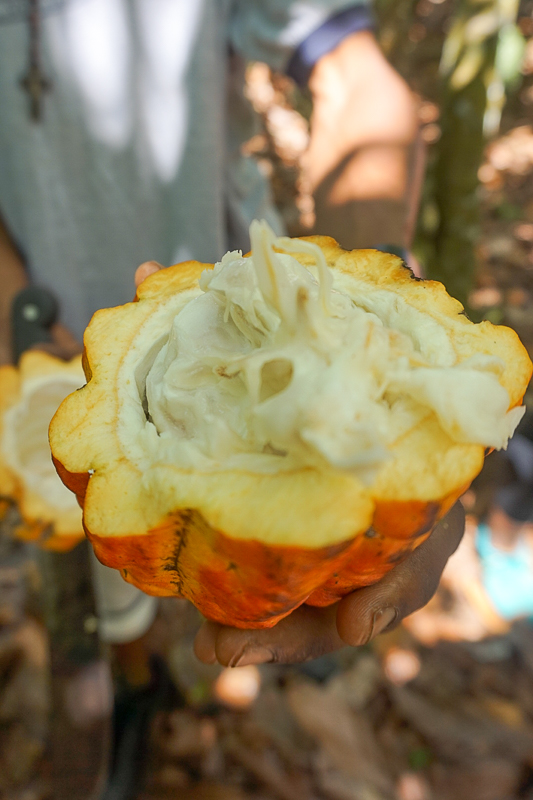
Baba de cacao
After the harvested pods are opened, typically with a machete, the pulp and cocoa seeds are removed, placed in bins, or laid out on grates for several days (the process we had witnessed at the Conacado facility). During this time, the seeds and pulp undergo “sweating,” where the thick pulp liquefies as it ferments. The fermented pulp trickles away, leaving the cocoa seeds behind.
The dried beans are then roasted (at the farm they use a deep iron skillet) and then ground into paste using a mortar and pestle. The paste is then rolled into ovals to be sold at market.
As we watched the beans roasting, family members grated the chocolate into hot water and passed it around to us with heaping bowls of sugar and slices of Arepa cake (traditional cornmeal and coconut cake ). This was pure unadulterated chocolate. What a treat!
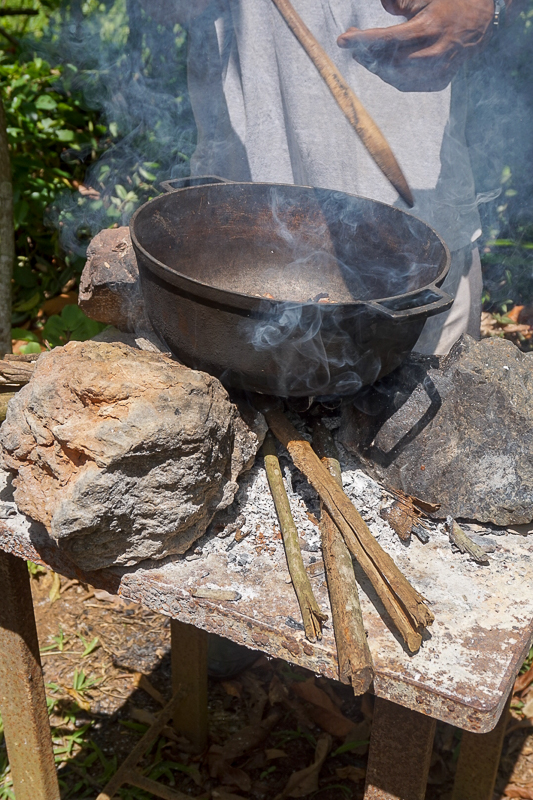
Firing up the skillet
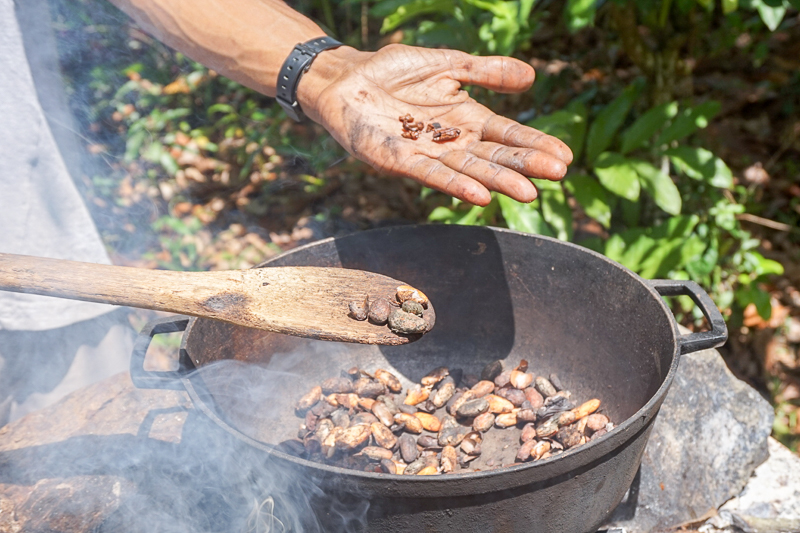
Beans roasting in the skillet
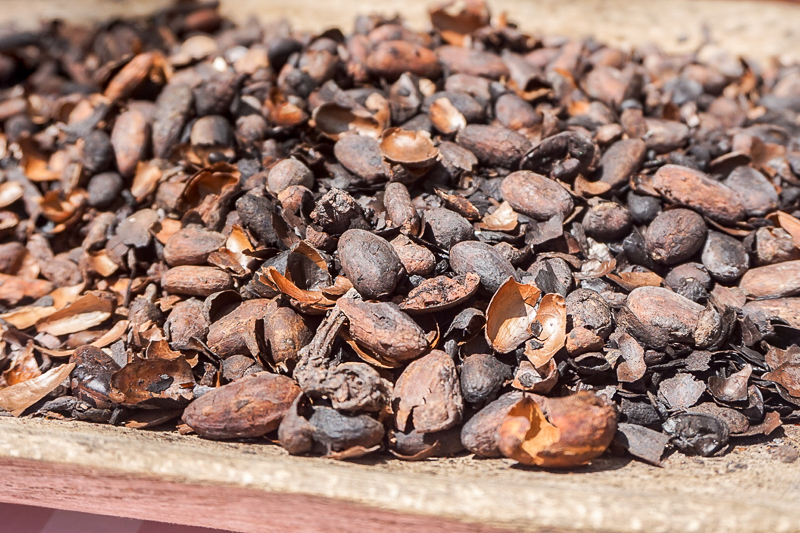
Toasted cacao beans
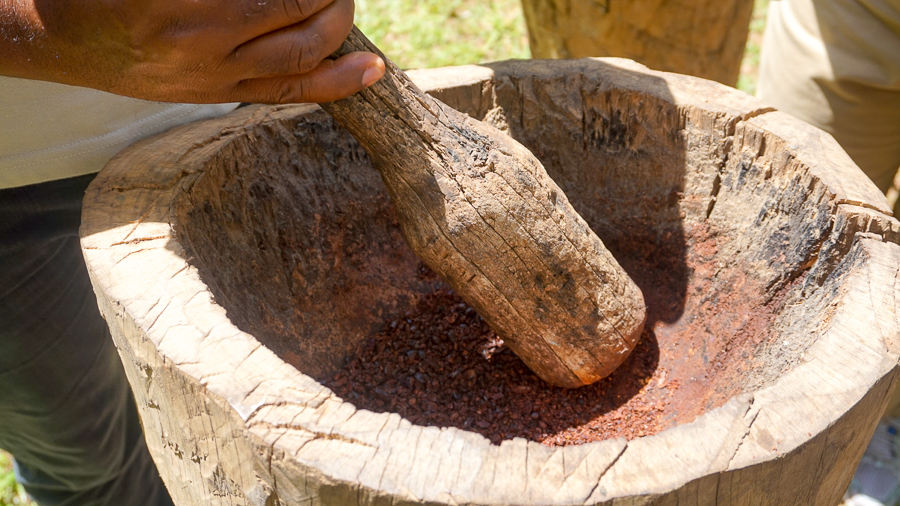
Grinding beans by hand
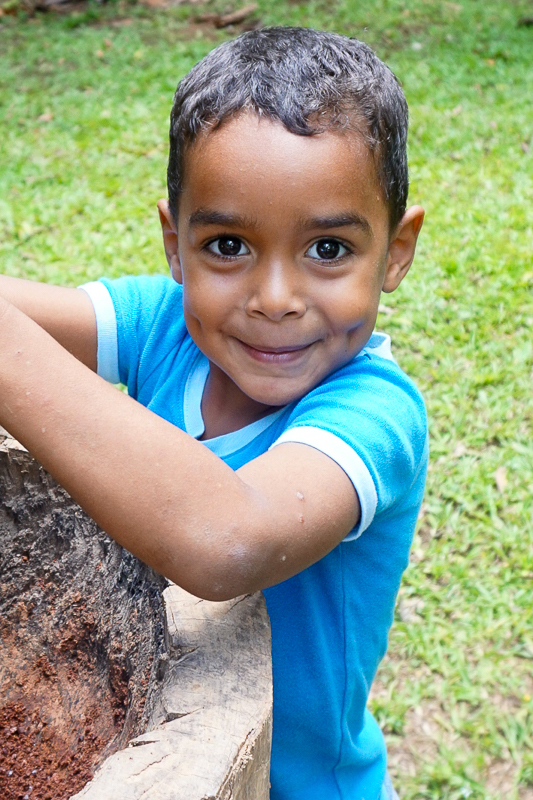
Daniel pitching in
The day wasn’t over yet as we all were invited to sit down and enjoy a traditional Dominican meal with the family. On the menu, one of the most fantastic roasted pigs I have ever tasted.
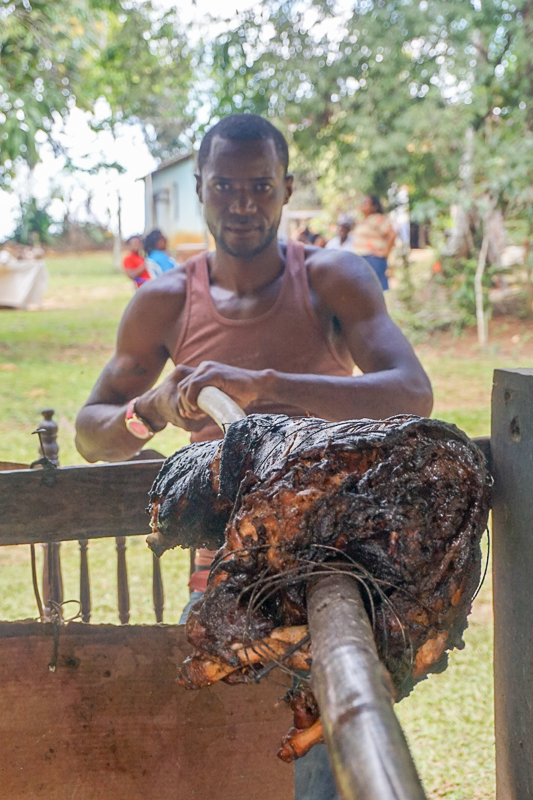
The Pit Master
Seasoned with herbs and roasted over an open flame for most of the day, it was outrageous. Crispy and perfectly seared with just the right amount of brown bits, you could forget the fork – this was finger pulling tender. Watch out Memphis in May!
On the side, plantains both fried and roasted, rice, beans and lentils, and of course, a tray of sweets – after all Dominican is known for its sugar. All washed down with Presidente (Dominican beer) and the ubiquitous Mamajuana, the lethal drink of rum steeped in tree bark and herbs.
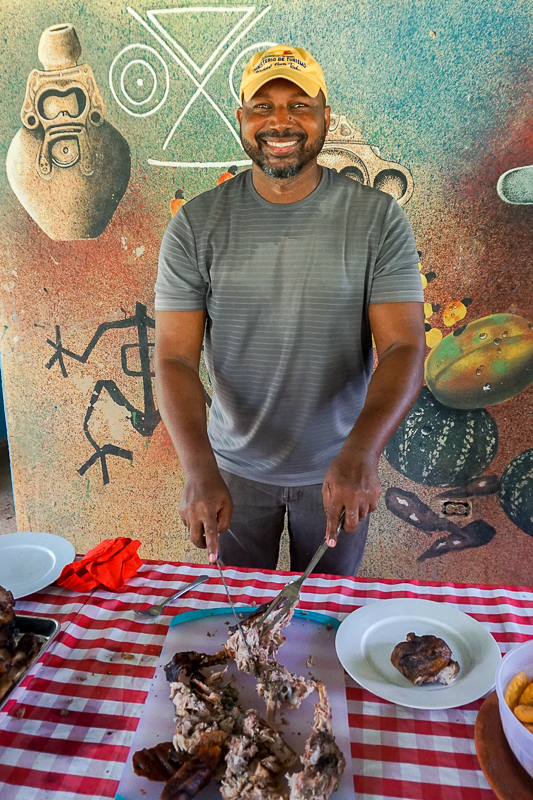
Expertly carved
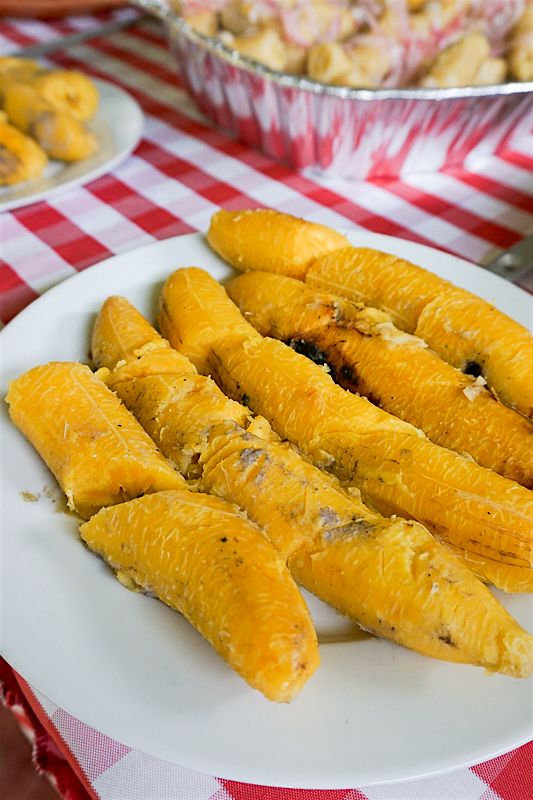
Plaintains

Rice and beans
Bellies full, sipping on our drinks while local musicians played Salves y Palos – an African stick music typically related to a religious festival – invoked to encourage a trance…
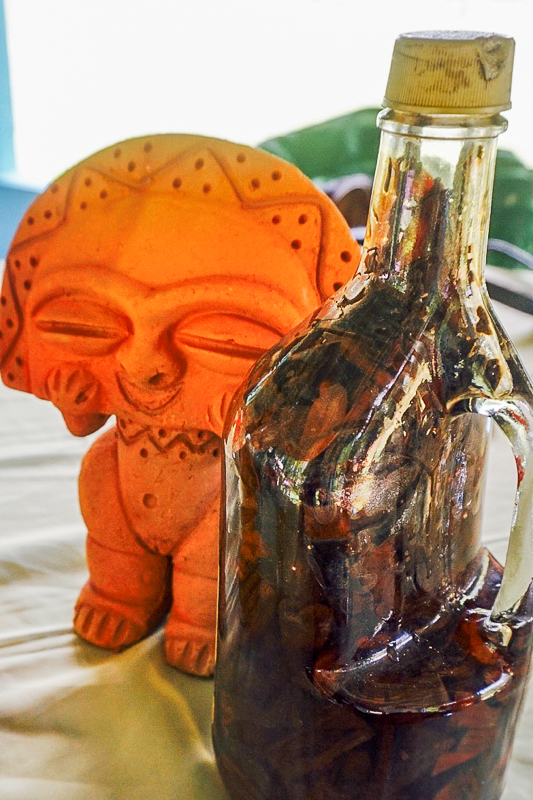
The Mamajuana guard making sure you don’t drink too much
The perfect end to a perfect day. Now to get back to my bed.
Note – All images are courtesy of Donna Brousseau.
This content is protected under International Copyright Laws. Pratesi Living provides this content to its readers for their personal use. No part (text or images) may be copied or reproduced, in whole or in part, without the express written permission of PratesiLiving.com. All rights reserved.
Disclosure – Donna was a guest of the Dominican Republic Ministry of Tourism. She was not compensated for writing this article and the opinions expressed are her own.

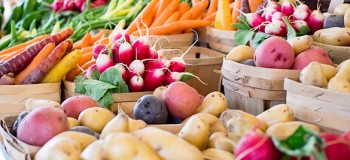
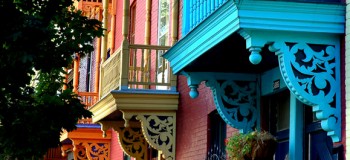



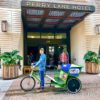









Gorgeous images of the enthusiastic and lovely Dominican people you met as you learned about cacao in all it’s stages of growth and processing on its way to what many of us believe is the finest elixir ever discovered by mankind. There’s NOTHING like truly participating in local life to open our understanding and appreciation of other wonderful cultures in this vast world of ours.